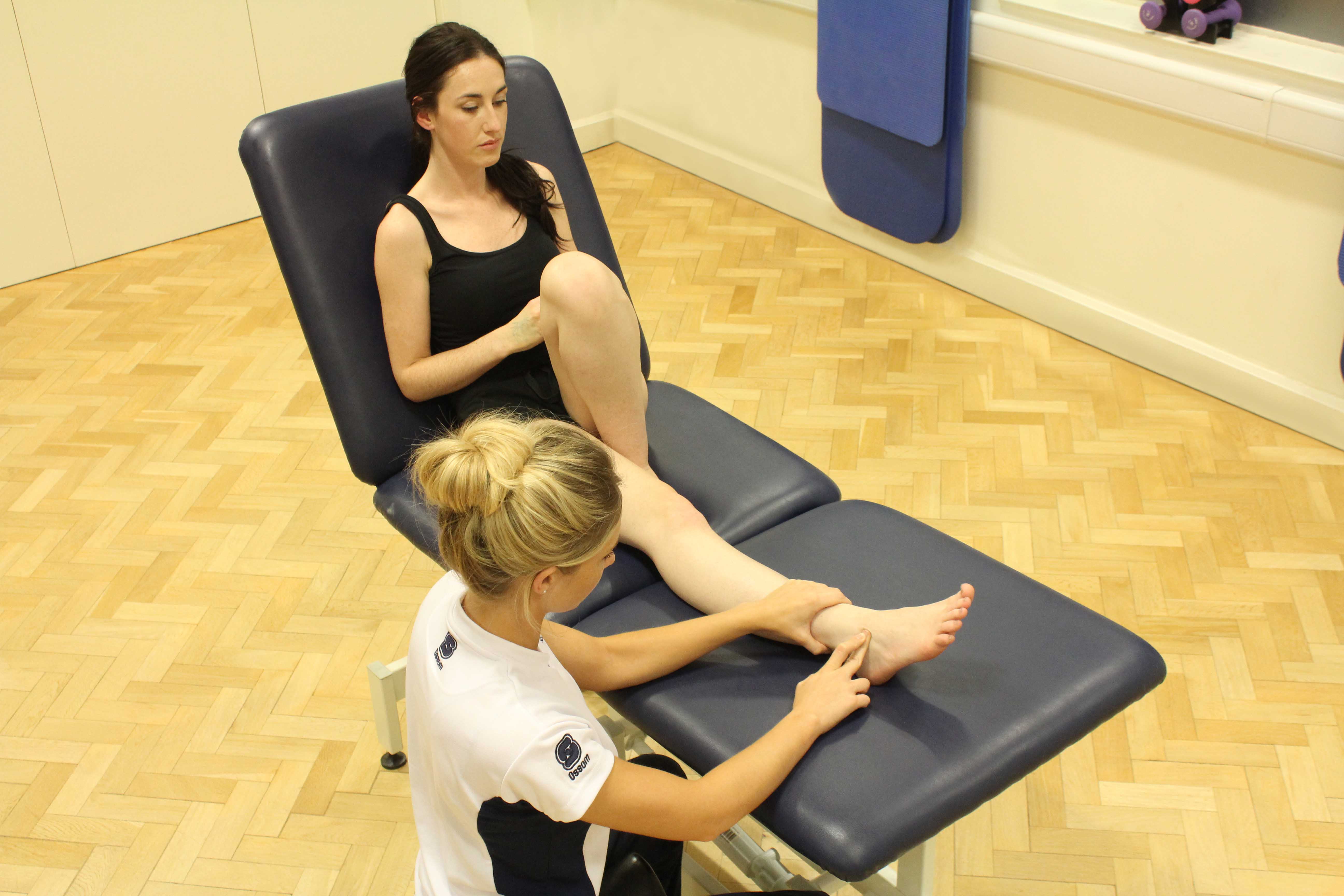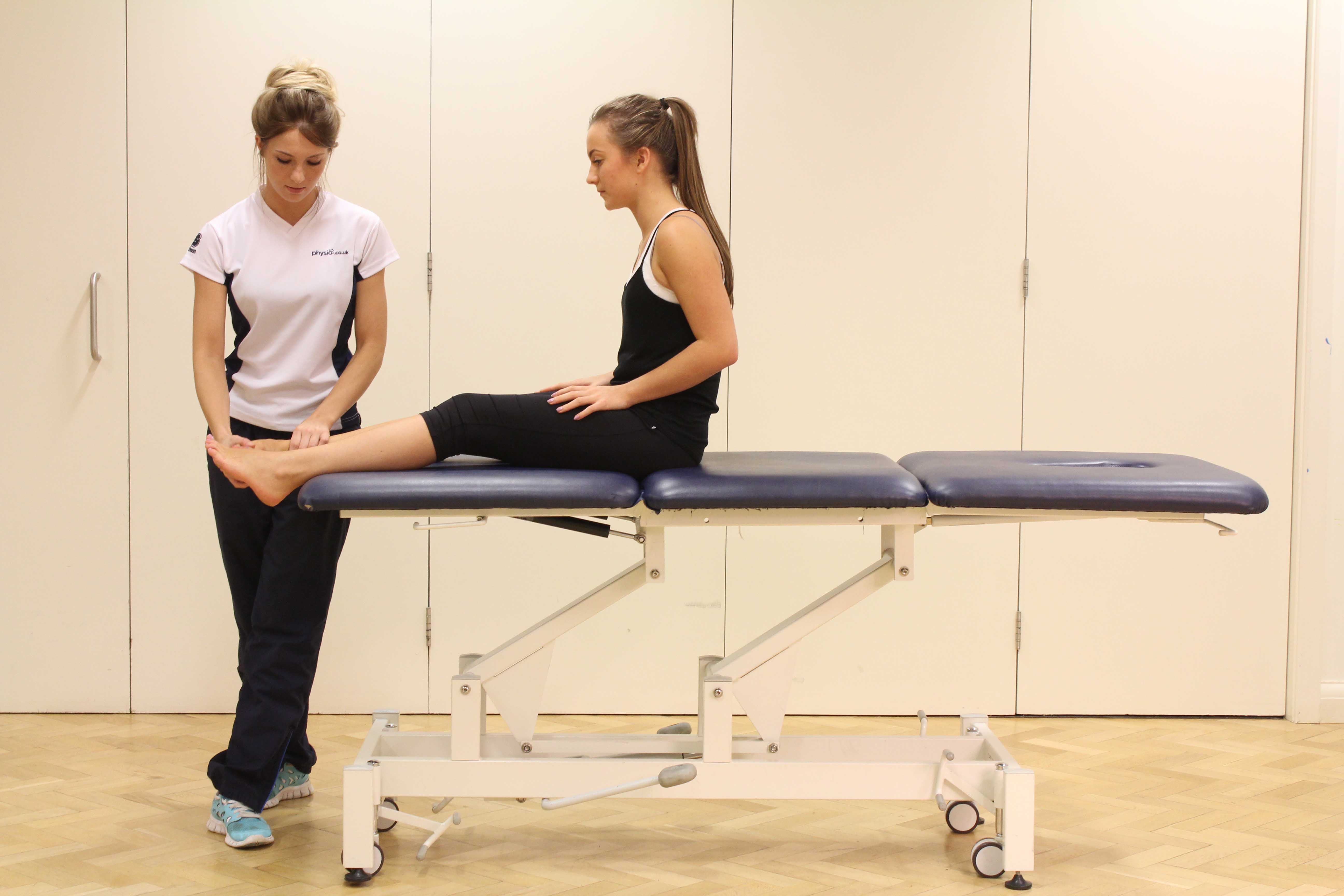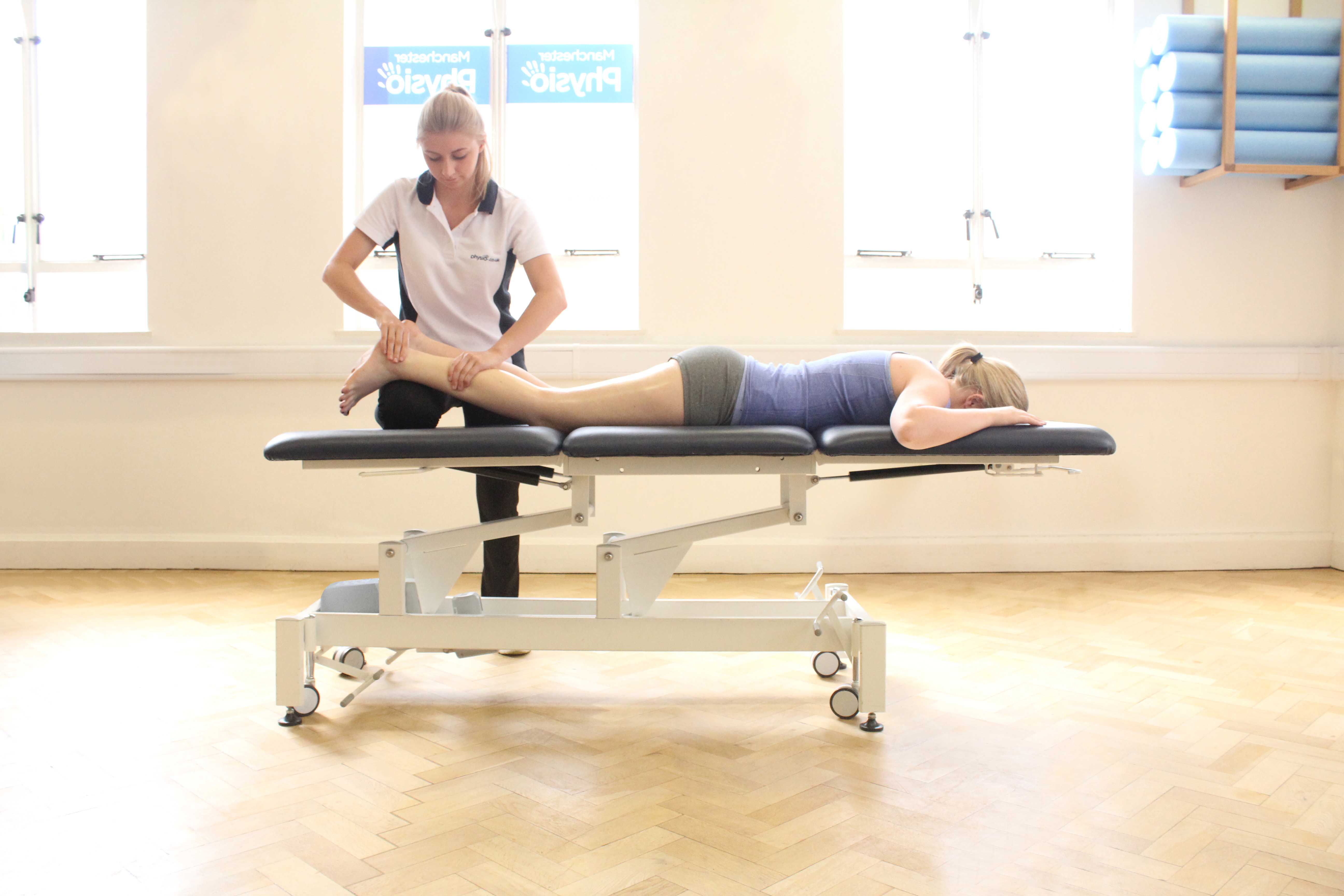The ankle joint (talocrural) consists of the fibula (calf bone), tibia (shin bone) and talus (wedge shaped bone of the ankle). A number of different ankle fractures can occur including an avulsion fracture whereby a small section of bone is pulled off by a powerful contraction of the muscle or tendon. Ankle fractures can also be comminuted meaning that part of the bone has shattered into pieces. The Weber’s ankle classification is most commonly used by orthopaedic surgeons:
Type A: Fracture that is below the ankle joint. This fracture is not treated with surgery.
Type B: Fracture at the same level of the ankle joint
Type C: fracture above the level of the ankle joint and which damages the surrounding the ankle ligaments. Surgery is needed in this instance.
Fractures of the ankle are the most frequent type of lower limb injury that require surgical treatment. Ankle fractures are commonly caused by the foot rolling outwards, inwards or a sudden twisting movement. A fractured ankle can often involve ligament damage and it is therefore important to receive an accurate diagnosis and treatment as soon as possible to prevent further complications.
If you have experienced an ankle fracture you will be able to identify with many of the following symptoms:
- Severe swelling around the ankle joint which may extend up the leg
- Pain
- Blisters around the fracture site
- Bruising
- Unable to weight bear
- Possible deformity of the ankle joint if the fracture is displaced
- Bone may be piercing the skin
- Bleeding if there is an open wound
 Above: Soft tissue friction massage of the ankle ligaments
Above: Soft tissue friction massage of the ankle ligamentsPhysiotherapy prior to ORIF ankle
For people who are unable to have surgery immediately, it is recommended to begin physiotherapy to maintain optimum range of movement and muscle strength of other unaffected joints in the body. Physio.co.uk will work with you to devise a personalised exercise programme to prevent possible complications following surgery. The physiotherapy offered to you before your surgery may include:
- Cryotherapy (ice) treatment of the fractured ankle to reduce swelling
- Compression of the area to reduce swelling and prevent stiffness
- Strengthening exercises of the surrounding muscles
- Stretching exercise to maintain range of movement of surrounding joints
- Strengthening and stretching of the upper limb
- Guidance about controlling your pain
 Above: Mobilisations and stretches applied to the connective tissues in the ankle
Above: Mobilisations and stretches applied to the connective tissues in the ankleSymptoms after ankle ORIF
Following the operation, your ankle will be place in an aircast boot or plaster for 4-6 weeks. You will be instructed not to weight bear for 4-6 weeks which includes walking, standing on the operated ankle and driving. During this time you may experience the following symptoms:
- Stiffness of the ankle and possibly knee joint
- Swelling around the fracture site
- Reduced ankle movement
- Reduced strength of the ankle and surrounding muscles
- Pain over the fracture site and on movement
 Above: Soft tissue friction massage of the achilles tendon
Above: Soft tissue friction massage of the achilles tendonPhysiotherapy after ankle ORIF
After 6 weeks, you will be asked to attend a clinic where your surgeon can X-ray your ankle again and tell you if the bone is healing adequately. Your physiotherapists at Physio.co.uk will then make a decision on your weight bearing status. Your physiotherapy programme will now focus on regaining optimum ankle strength and movement. You may also be able to drive short distances depending on your pain levels.
Weeks 1-6
While you are non-weight bearing, physiotherapy will focus on maintaining strength and movement of other joints and muscle groups. Other physiotherapy during this time will include:
- Cryotherapy (ice) of the injured ankle to reduce swelling
- Pain control
- Gentle active (done by yourself) range of movement exercise in a non-weight bearing position
- Continuing the exercise programme for surrounding joints and upper limb
Weeks 6-12
The physiotherapist will review your progress and you should be able to continue with a more active rehabilitation programme with Physio.co.uk. The focus now will be on increasing the range of movement and strength of the affected ankle joint. This is imperative to allow the optimum recovery and help prevent any future ankle injuries. It is also important at this stage to improve the joint proprioception (joint awareness) as this will have been compromised after many weeks of immobility. Physiotherapy at this stage will include:
- Mobilisation of the ankle joint to restore joint movement
- Strengthening exercises
- Pain control to allow the progression to weight bearing from non-weight bearing
- Aerobic exercises including static bike and treadmill
- Balance exercises including shuttle and wobble board
- Proprioception retraining
- Hydrotherapy
- A detailed home exercise programme to facilitate the best possible recovery
Following 12 weeks
After 3 months you will now have achieved a large improvement in both strength and range of movement with Physio.co.uk. It is important at this stage to concentrate on functional activities which are important in your job, hobbies or sport. Physiotherapy will therefore include:
- Functional exercises including dynamic jumping, hopping and twisting movements
- Individualised circuit training
- Dynamic balance exercises tailored towards your sport, hobby or job
- Teaching of taping techniques if required during the initial return to sport
- Progression of aerobic exercises
- Progression of mobilisation to be able to achieve optimum range of movement
- Prevention advice for the future
- Full recovery of the ankle joint takes between 12-18 months
Summary
ORIF ankle is surgery to treat a displaced or complicated fracture. Your surgeon will open up the ankle joint to realign the broken bones and then use pins, screws, wires or plates to ensure the bones stay in the correct position. Although ORIF ankle is an invasive procedure, the success rates are very high and if physiotherapy is adhered to you will achieve the best possible rehabilitation outcome. A personalised physiotherapy programme from Physio.co.uk will help to prevent any post-operative complications such as extensive swelling, stiffness pain and weakness. It will also maximise your rehabilitation potential and ensure that you return to your sport, job or hobbies as soon as possible. To book an appointment to see one of our physiotherapists, please call Physio.co.uk on 0330 088 7800 today!

 0330 088 7800
0330 088 7800

































